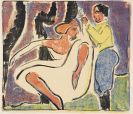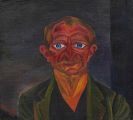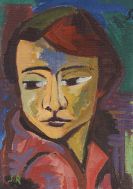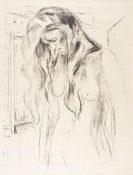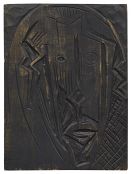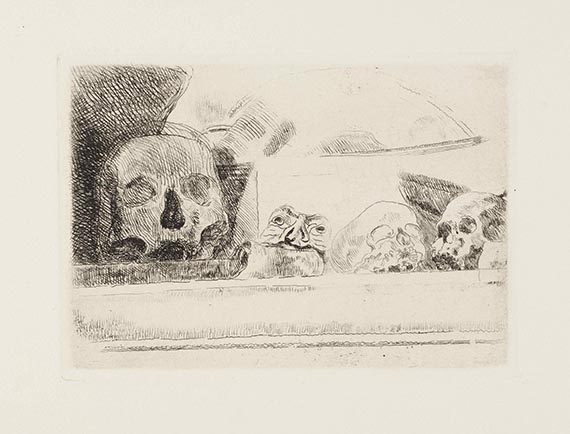
Maria Caspar-Filser
Riedlingen
1878 -
Brannenburg
1968
Maria Filser was born at a time, when the French Impressionists with their free and spantaneous emotion and mood driven paintings faught for recognition as artists. She mainly grew up in idyllic areas of southern Germany, which had a formative impact on the artist. From her early childhood Maria had a close friendship with the neighbor's son Carl Caspar, whom she later encountered again at the Stuttgart academy, where she studied from 1896. The two artists remained together ever since and married in 1907.
Maria Caspar-Filser's early pictures show that she did not remain unimpressed by the new method of plein air painting and the gradual abandonment of realism. Maria Caspar-Filser spent several months in Munich, to attend Ludwig Herterich's classes at the academy. In 1905 Maria and Carl traveled to Paris, where they studied Avant-garde painting and were fascinated by the Impressionists. Cézanne's pictures had an equally lasting impression on them: Maria Caspar-Filser recognized his attempt to turn the Impressionists' "world of light" into a "world of color".
This revelation and Van Gogh's style played a major role in Filser's further development. The couple lived in Munich, Balingen, Gottlieben in Switzerland and from 1909 once again in Munich. They both became members of the "Deutscher Künstlerbund" and regularly participated in the associations' exhibitions until 1936.
In 1913 Maria Caspar-Filser became the only female founding member of the "Münchner Neue Sezession". Her paintings reveal that she no longer wanted to depict landscapes in a naturalistic way, but that she aimed to create a color composition. In 1914 this idea was supported by the Villa-Romana-Prize and a sojourn in Italy, where she could experience the southern light and colors.
In 1916 Corinth invited the artist to the "Berliner Sezession". From 1922 Maria Caspar-Filser and her husband worked together in Munich, where they gradually achieved their breakthrough as artists. With her style, which is beyond Impressionism and Expressionism and which is marked by a balance of abstract and concrete forms, Maria Caspar-Filser took part in the 1924 to 1928 Venice Biennale. She became the first female German painter to be appointed professor.
During the time that followed she suffered under Nazi defamations which culminated in her ban from exhibitions in 1936. After sojourns in Italy and Switzerland, the Caspar-Filsters retreated to the Inn valley. In post-war Germany Maria Caspar-Filser made decisive contribution to the revival of a new art scene. In 1947 she was a founding member of the Munich "Neue Gruppe" and in 1950 she supported the re-formation of the "Deutscher Künstlerbund".
Would you like to sell a work by Maria Caspar-Filser?
Infos for seller
